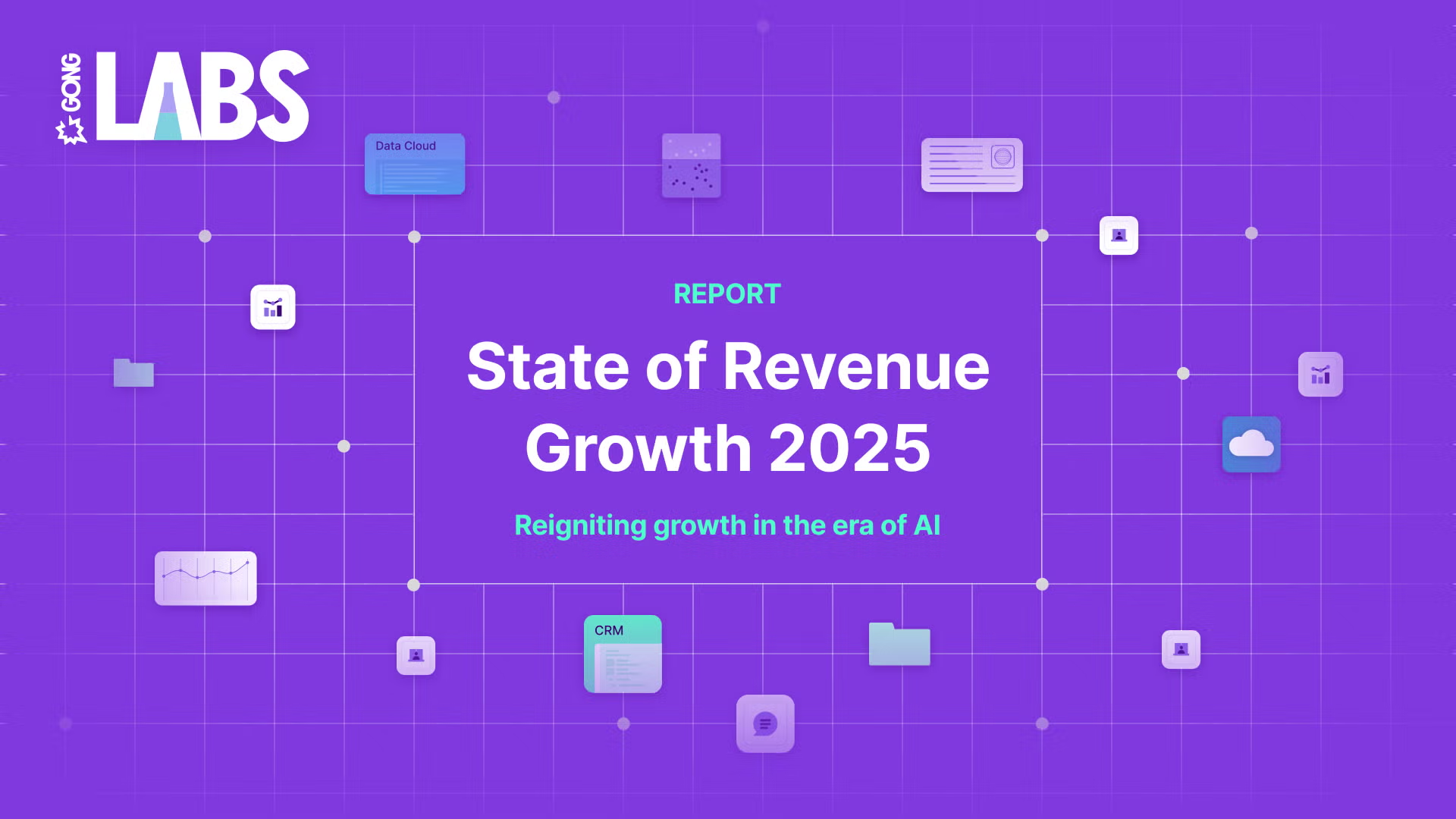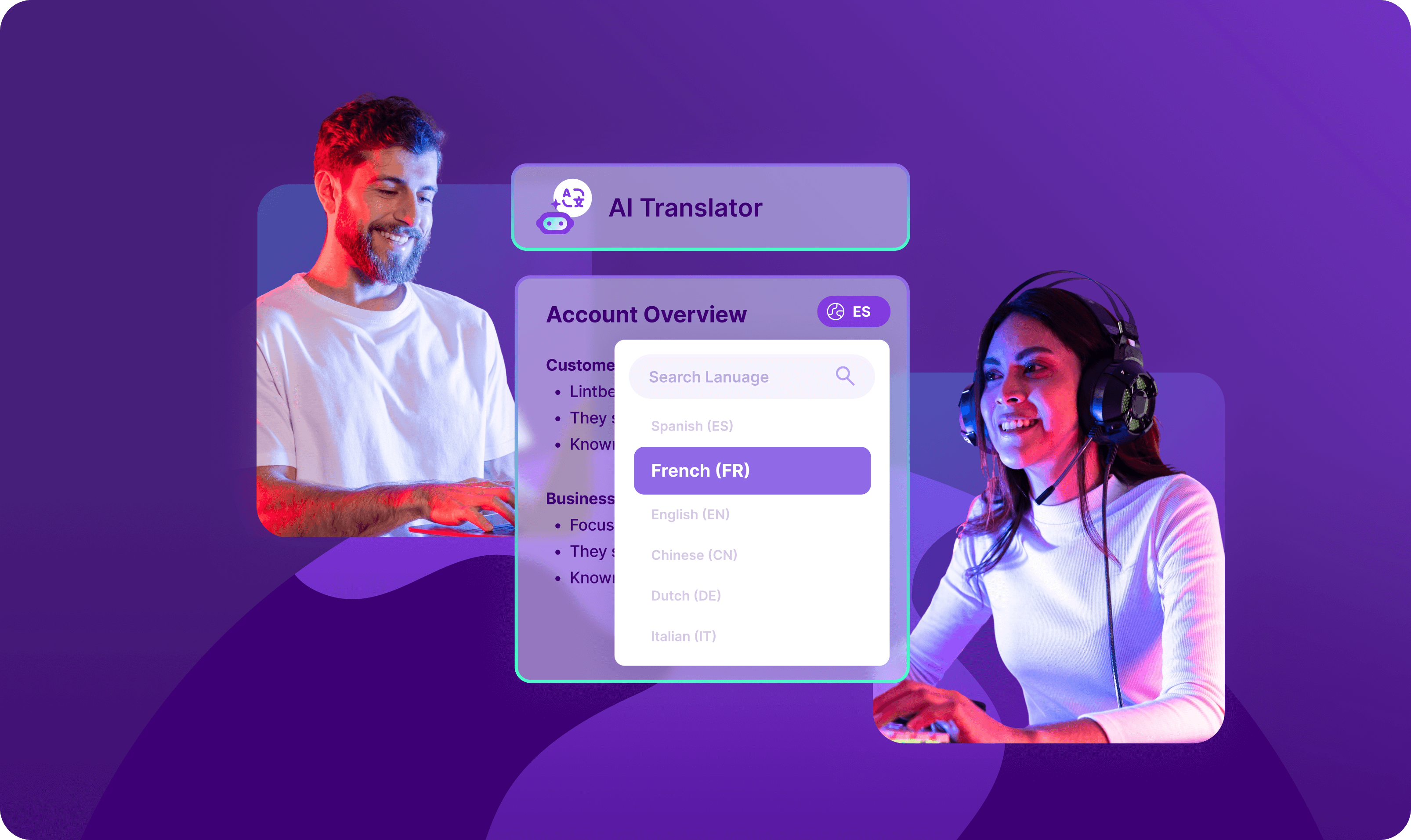Sales strategies
Pipeline generation guide: 7 best practices to drive sales

Kyle Willis
Enterprise Account Executive
Published on: September 25, 2024
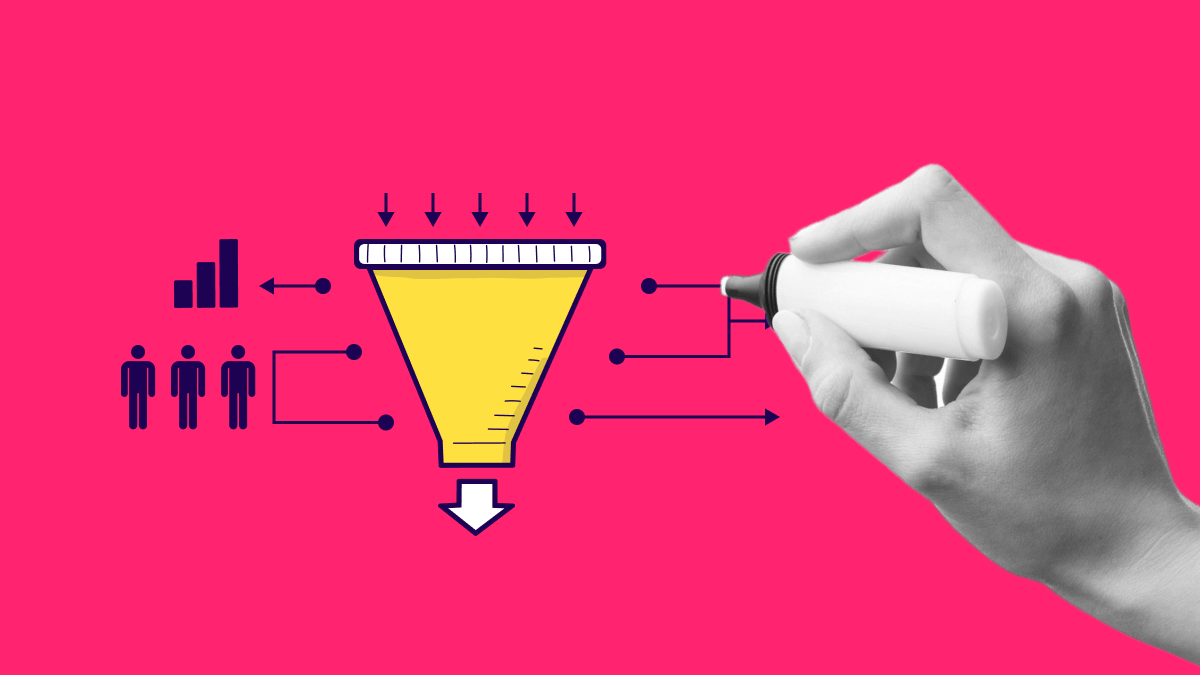
“Improving pipeline performance” was the main focus of 84% of business leaders in 2023. It’s no surprise that this priority continues to lead the way in 2024, across sales teams and organizations.
This is because a clunky, disjointed sales pipeline results in lost leads and slow sales cycles.
With a streamlined sales pipeline, you can pull high-potential prospects down the funnel and get a greater number of qualified leads to convert and close.
But how do you get there?
Let’s dive into the top pipeline generation strategies and best practices to streamline your funnel to drive more sales.
What is pipeline generation?
Pipeline generation includes activities and tools that consistently and reliably ensure there’s as in-flow of revenue from closed-won deals. Ideally, this happens via an efficient, automated process that includes business intelligence tools and cross-team collaboration.
Inside the black box of pipeline generation are prospect-nurturing processes handled by sales and marketing teams. They consider a lead’s journey, from the moment of awareness through to the transformation when leads become sales- or marketing-qualified leads as a result of nurturing and engagement.
The key activities for successful pipeline generation include robust prep or scoping work. Include the following in your long-term plan for healthy pipeline generation:
- Development of an ideal customer profile (ICP):Whodo you serve andwhy?
- Creation of targeted campaigns:Whatis your ICP attracted to and trying to resolve?
- Lead/prospect qualification:Howdo prospects interact with your sales enablement assets? Do their interactions validate information about product-market fit or pain-solution alignment?
- Engagement and nurturing:Whatare the steps and touch points in the buyer’s journey that guide a prospect from awareness to purchase?
- Results measurement and pipeline refinement:Whereare prospects dropping off, bouncing, or becoming disengaged, andhowcan sales enablement or RevOps close these gaps?
These activities should make it clear why pipeline generation is a process and a journey with many moving — and often complex — parts.
The solution to complexity is cohesion. Just ask the sales and marketing teams of companies that reported a 20% annual growth rate when working together, according to research conducted by Aberdeen Research Group. If any of your pipeline generation activities are going to result in revenue, cohesion is key.
Pipeline vs lead generation: What’s the difference?
The difference between pipeline generation and lead generation is about sequencing as much as it is about scoping.
Whereas lead generation focuses solely on finding new leads,pipelinegeneration covers the entire journey from identifying leads to closing the sale. As an activity, lead generation is complete once a prospect enters the funnel.
By contrast, pipeline generation and managementneverfully closes. Having a sales pipeline that constantly moves prospective leads from top to bottom and addresses their needs at every stage of the journey, is the goal. It sets you up for long-term, sustainable revenue generation.
Part of pipeline generation and management is using each step of the sales pipeline to guide the lead or prospect down the sales funnel, ever closer to a sale. In fact, it’s why cohesion is necessary: Lead generation precedes pipeline generation and management. You couldn’t develop a pipeline without lead gen campaigns.
What are the benefits of pipeline generation?
Pipeline generation fuels your company’s growth by continuously attracting and nurturing potential customers. It’s the foundation for all your sales and revenue efforts. Below are the benefits you’ll reap if you construct this foundation well:
1. Optimizes sales efforts
When your marketing and sales teams align their messaging and processes, their efforts are more targeted and effective.
By focusing on the same type of leads and qualifying opportunities properly, the marketing team can deliver prospects with a higher chance of converting.
When your pipeline generation efforts are concentrated in a specific direction, your sales team can take a more direct approach and focus their messaging, communications, and engagement on only the most promising prospects. This increases the chance of moving a deal forward and smooths out the friction and delays.
2. Improves sales forecasting
When a sales pipeline is well-organized and founded on reliable data, teams can get a clear picture of each prospect’s status, understand where they sit in the pipeline, identify what needs to happen to move them along, and tie all these insights to business outcomes. It also provides a reliable roadmap for future sales, which reduces uncertainty and makes it easier to predict potential revenue.
I’ve developed reports that can extract pipeline and process it, as well as project pipeline generation from the past into the future. So on a very basic level to prepare your forecast, you’re going to start with what you know.
I've developed reports that can extract pipeline and process it, as well as project pipeline generation from the past into the future. So on a very basic level to prepare your forecast, you're going to start with what you know.
With a clear view of what’s on the table, you can enhance budget planning to allocate resources where they’re most needed.
Plus, it makes it easier for your sales team to prioritize the leads closest to a conversion.
3. Drives profitability
Good pipeline generation boosts the number of sales opportunities available to sales professionals. A steadier flow of better-qualified opportunities, backed by data, will help boost your win rate.
With clearly defined steps, it’s easier to move leads down the funnel, resulting in higher profitability — and not just because you have more qualified prospects. You’re also wasting less time and fewer resources on ineffective methods and poorly qualified leads.
Additionally, aligned sales and marketing teams operate with clarity about their ideal customer’s behaviors, pain points, needs, and levels of awareness. With this information, it’s easier to identify the most promising prospects and lower your customer acquisition cost.
4. Shortens sales cycles
Long sales cycles result in dropouts. An alarming 28% of prospects say they back out of deals if the sales cycle takes too long.
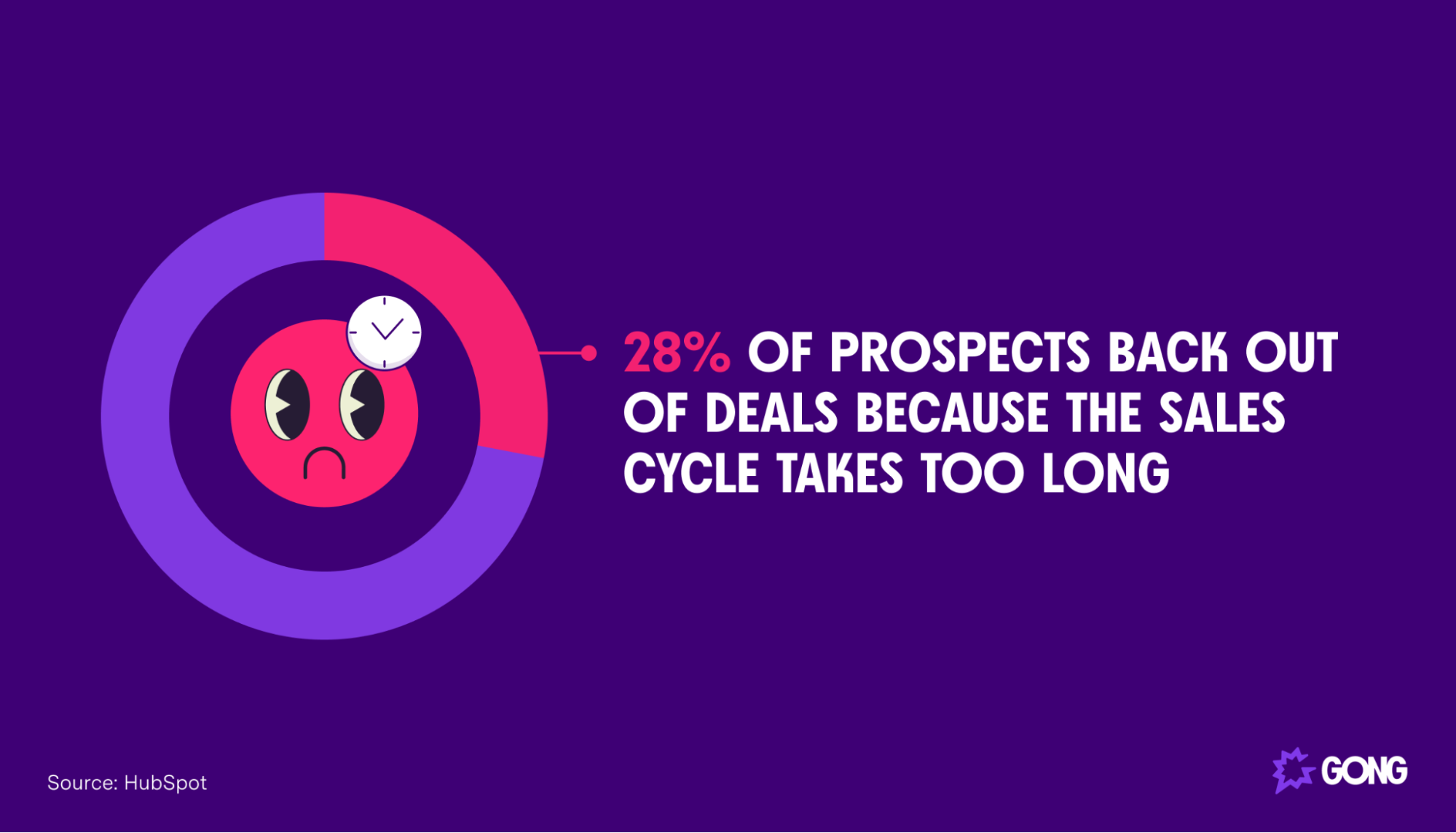
A refined pipeline accelerates the sales process.
Lead qualification becomes more effective, and sales teams know how to address buyer needs, which results in quicker conversions. With less time spent going back and forth with leads, sales reps can focus on high-value prospects and move them through the sales cycle faster.
5. Enables data-driven decision making
With a well-maintained pipeline comes more accurate pipeline data. If your pipeline truly reflects what’s in your funnel, it becomes easier to make decisions based on this data.
You’ll get a better idea of the most promising customer segments and profiles, thus enabling you to focus your efforts and refine your overall strategy.
6. Highlights new market opportunities
New market and segment opportunities become clear when you better understand buyer behaviors through your pipeline data. These insights allow you to spot promising trends in places you may not have previously noticed.
You gain a competitive advantage if you can immediately recognize changes in buyer behaviors and tap into opportunities that expand your reach.
7. Provides better insights for improvement
Insights into your pipeline help you identify bottlenecks that slow down the sales process and cause leads to drop out.
With data-backed sales pipeline reports , you can address issues with speed and focus, to improve efficiency on your team and optimize your sales and marketing tactics for better performance.
What are the challenges of pipeline generation?
While pipeline generation brings a wealth of benefits, it can be challenging if you don’t have reliable data or great data capabilities to guide the way. This will make it tough to understand your current reality (i.e., get real visibility into your pipeline), or confirm whether the changes you make achieve the desired outcomes. Here’s where you may run into trouble if you try to tackle pipeline generation without reliable data and transformative data capabilities:
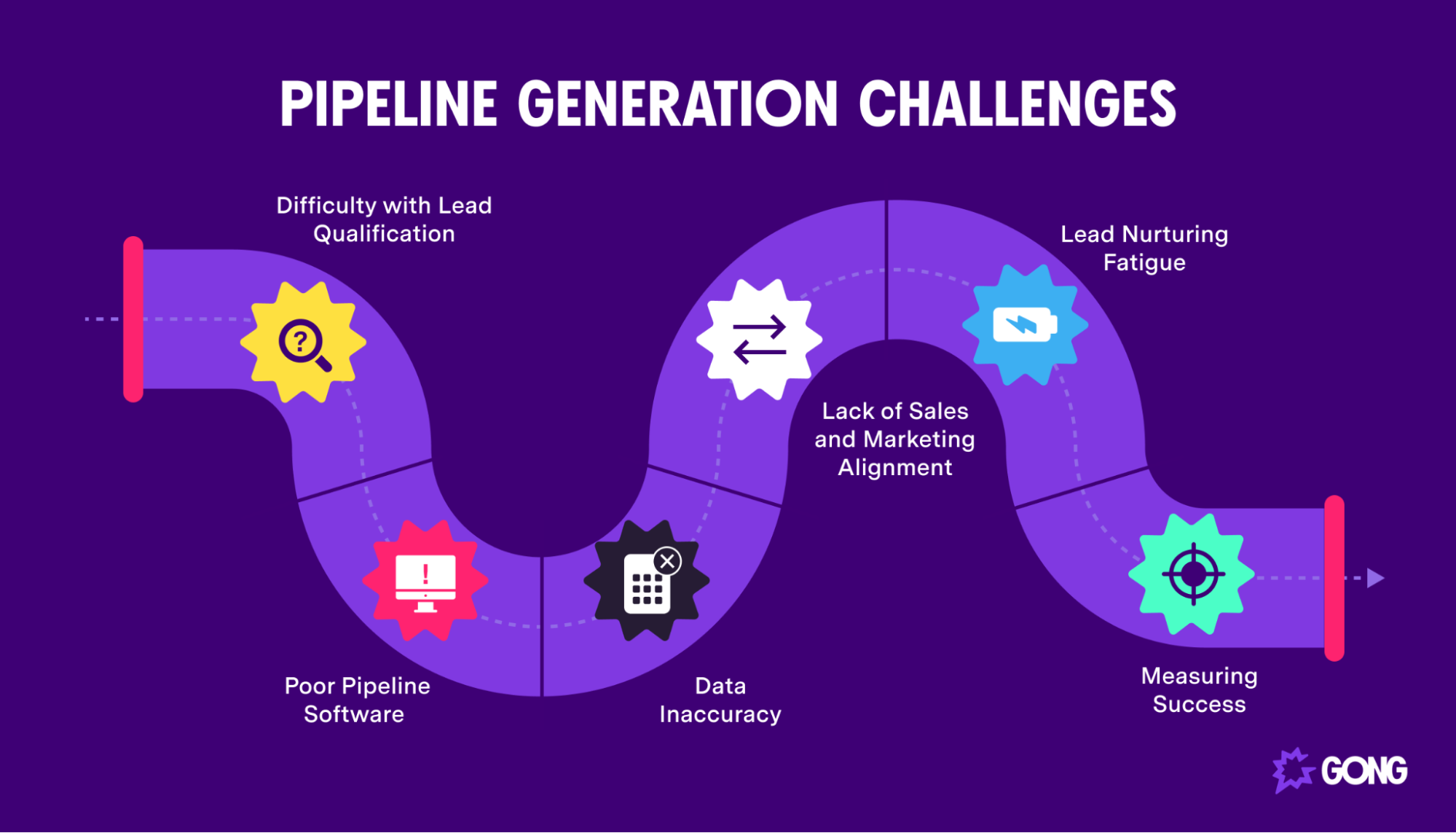
1. It’s difficult to qualify leads
It’s important to understand and target the right audience, and identifying them correctly can be tricky.
You need to develop an ICP and buyer personas using existing buyer data alongside social and website engagement data.
Once you know your ICP, you need a consistent process for qualifying leads. Otherwise, you’ll find your team underqualifies leads and waste time on prospects that don’t fit your solution.
Alternately, you might find your team overqualifies leads. In this case, they’ll spend so much time ensuring a buyer’s fit that other prospects will slip through the cracks.
A data-backed approach to qualification helps establish the right balance.
2. Your software can’t fully tap into your pipeline
If your pipeline management software lacks the capacity to run in-depth analyses, you’ll miss key insights.
Most sales tools only examine a small part of the pipeline. What they neglect are key marketing efforts and external signals such as search intent, website clicks, predictive signals, etc..
Revenue intelligence tools like Gong use powerful AI to look deeper into your pipeline, using more than 300 signals to assess pipeline health and deal opportunities. This gives you crystal-clear visibility into what works, what doesn’t, and what you should do next.
If you want to learn more about how AI can improve your pipeline forecasting, speak with an expert at Gong today .
3. Your data is prone to human error
Pipeline visibility is only as accurate as the data you input.
Outdated information, human error, and incomplete data all lead to inconclusive or incorrect assumptions.
If your pipeline analysis isn’t founded on reliable and relevant data, you’ll put effort into the wrong places, create skewed forecasts, and make poorer business decisions.
4. There’s a noticeable lack of sales and marketing alignment
Sales and marketing teams need to coordinate their approach. In fact, 39% of sales reps say better alignment is the thing they need most from their marketing team.
Inadequate communication and uncoordinated processes lead to disjointed efforts. This might present as lots of poorly qualified leads sitting in a stagnant pipeline with long, slow sales cycles. You might also see poor handoffs from marketing to sales that let promising prospects slip through the net.
5. Your team has lead nurturing fatigue
The average prospect needs six to 10 touches to convert , but maintaining consistent engagement can feel tedious. It’s tough to come up with inspiring ways to approach your prospects, and it can feel like you’re hounding them.
Long-term nurturing requires conscious consistency where you build relationships with prospects and foster trust — in part by establishing your expertise.
This kind of consistent back-and-forth costs time and money, so if you suffer from resource constraints, lead nurturing can feel overwhelming. Turn to your data to see where your lead-nurturing efforts would be most effective, and which ones work best.
6. Your metrics lead to subjective assessments
The right metrics can measure success and pipeline health properly, so choose them wisely
Your metrics should support the achievement of your goals and targets, otherwise you’ll get mixed messages and create misguided strategies.
Remember, you need to track your key metrics consistently and interpret them correctly. Doing so manually or with low-quality tools will almost certainly lead to inaccurate or subjective results.
Instead, a solution like Gong offers keen insights that drive highly accurate predictions, helping you manage your pipeline with a more dependable level of clarity.
7 best practices for creating a successful pipeline generation strategy
A healthy sales pipeline is crucial for driving sales performance.
Let’s explore the best practices that help you generate a powerful pipeline strategy and create a steady stream of sales opportunities that supercharge growth.
1. Create an ideal customer profile (ICP)
Analyze existing buyer data and social media engagement to define your ICP’s characteristics, business demographics, pain points, behavioral traits, and more.
Dive into further market research to understand how current market trends and competitor strategies support this portrait of your ICP.
Use this information to segment your target audience and create detailed buyer personas that reflect your ideal customers. Focus on the needs and challenges these personas face to understand how to solve them through your marketing and sales tactics.
Doing this makes it easier to align sales and marketing, as everyone can target the same audience.
2. Score leads
Rank prospects with a lead scoring system based on their likelihood of converting. This way, you can prioritize leads so your sales team knows where to focus their energy.
Consider using AI lead-scoring software, as these tools can analyze data quickly and accurately.
By scoring sales leads in this manner, you prioritize efficiency in upcoming stages of the sales process. You concentrate on the prospects most likely to convert, which can lead to shorter sales cycles and higher conversion rates.
3. Leverage AI’s predictive analytics
AI-driven predictive analytics can considerably improve your sales forecasting and lead identification.
Among teams using AI for forecasting, 84% say they’ve seen an improvement in the accuracy of their forecast, with 41% noting major improvements.
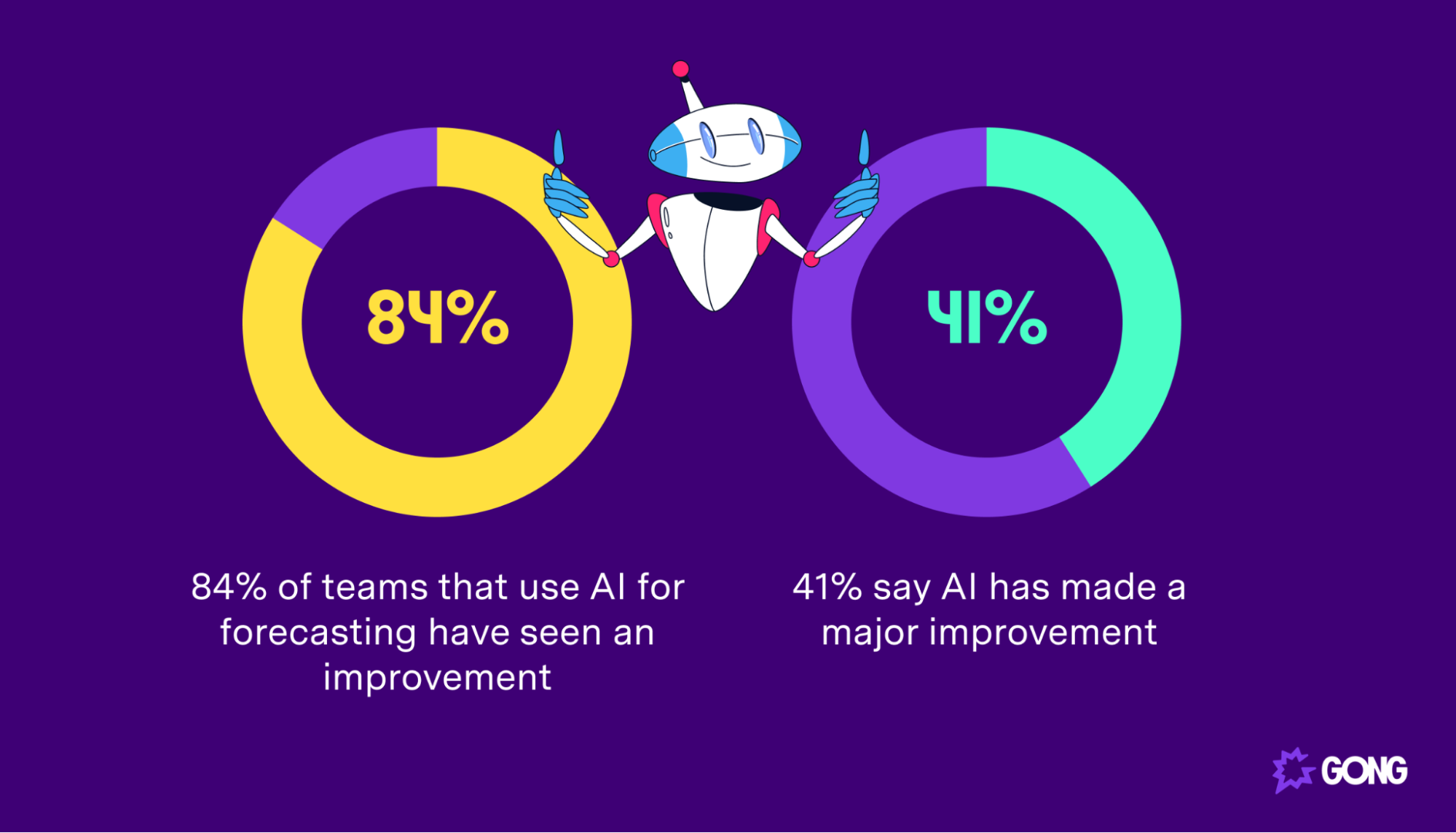
Unlike traditional forecasting methods, solutions like Gong use hundreds of intent signals to predict buyer behavior with extremely high accuracy.
With its ability to forecast future sales trends and identify high-potential leads, predictive analytics help you make data-driven decisions that anticipate and respond to market changes.
4. Align sales and marketing objectives
According to top sales leaders, improving cross-functional alignment is the number one way to drive growth .
This is because aligned sales and marketing teams objectives, goals, metrics, and communication channels. This leads to a synchronized focus and a better handoff process, where everyone concentrates on the same buyers and uses complementary tactics to move them through the funnel.
Regular alignment meetings are vital to agreeing on goals and approaches to improve collaboration and ensure consistent messaging. These discussions allow you to make sure everyone has access to the same data, tools, and CRM systems.
5. Measure marketing attribution
Track and analyze all marketing activity to pinpoint what works and what doesn’t. Trace the path from lead generation to conversion to see which tactics convert the most qualified leads.
Then dive into conversation intelligence data and AI-backed insights on your best-qualified leads to understand which methods generate the most promising prospects.
Don’t be generic about it. Identify exactly which content types and marketing tactics work best for each segment. Just because something works for one group doesn’t mean it works for another.
When it’s done well, this best practice will help you identify the most effective campaigns with the best ROI.
6. Perform sales funnel analysis
Analyze and track your sales funnel regularly. This way, you’ll notice bottlenecks and areas for improvement straight away.
Work out where potential customers get stuck or drop out of the buying process, and assess whether this arises due to poor lead qualification or ineffective sales tactics. This will help you figure out where the funnel needs improvement and how you should enhance it.
Continuously refining the sales funnel increases your pipeline efficiency, shortening sales cycles and driving conversions.
7. Use AI to personalize sales engagement
While most buyers expect customization, only 13% of buyers say that sellers’ messaging is relevant to them.

( Image Source )
This is why 84% of sales teams now use generative AI (gen AI) in their sales outreach.
Gen AI can considerably speed up personalization by tailoring sales content to each buyer’s needs and challenges. This improves the customer experience and cuts back on admin time for sales reps.
A whopping 78% of reps say they’like AI to help them personalize their content marketing since they spend nearly six hours manually tailoring pre-written content each week.
Using AI and automation on your team, you can ensure personalized and optimized lead nurturing with timely, relevant content that speaks to the buyer. Solutions like Gong generate hyperpersonalized content and automate parts of the follow-up workflow.
This personalized and streamlined approach improves lead engagement, reduces manual efforts, and encourages prompt buyer engagement.
If you want to leverage the power of AI to personalize your pipeline strategies, speak with a sales expert at Gong today .
Analyze your competitors’ pipeline generation strategies
Having a clear overview of your competitors’ pipeline generation strategies can provide you with invaluable insights as to how to improve your approach.

Here’s how you can analyze it properly:
1. Deconstruct sales and marketing materials
Examine your competitors’ websites, landing pages, and social media accounts. Consider their techniques to capture leads, such as gated content, promotions, and interactive posts.
You also need to review all their sales documentation. Look closely at their brochures and pitch presentations to understand the messaging and sales tactics they use to hook their target buyers.
2. Look at content strategies
Make a map of their blog content to identify key themes. Consider how they use pillar and cluster tactics to group content around particular topics.
Dive in further using SEO tools to identify their keyword rankings. This will help you better understand where they’re focusing their content efforts.
Pay attention to the types of content they use. Do they leverage video and graphics as well as written content? How successful are these posts?
Also, consider their backlink strategy. Which expert authorities are linking to their content? Backlinks help boost your competitors’ credibility and in some cases are sources you can also reach out to for backlinks.
3. Check out reviews
Read customer feedback on review sites to see what their audience says about them.
Find out what buyers love and dislike about your competitors’ products. Learn which features your target audience enjoys most, then consider how you can gain a competitive edge by offering an improved service or product.
Also look for industry reviews or comparison articles to get an expert’s perspective on the competition’s success.
4. Leverage social listening
Harness social listening tools to track online conversations about your competitors and relevant industry trends.
Identify the key phrases and discussion topics to gauge the overall sentiment, as well as what the audience enjoys talking about most.
5. Analyze pricing strategies
Look into how your competitors price their products and services, as this will help you determine whether your prices reflect the market rate.
Dig into the promotions and discounts they offer to see if you can compete with their pricing tactics.
6. Consider awards and recognitions
See where your competitors leverage industry awards and recognitions to boost their credibility. Determine whether these awards are relevant and attainable for your company to boost your social proof.
7. Read industry reports and studies
Dig into the industry trends being suggested or identified by expert authorities and look at how your competitors harness these trends. Research industry papers that talk about your competitors and note down any strategies they might be pursuing.
Listen for any industry experts that mention your competitors in reviews, listicles, or comparison articles. What are they being listed for? Which of their tactics might you want to try to support your own pipeline generation approach?
Gong is your partner in every stage of pipeline generation
An effective pipeline generation strategy requires an end-to-end solution. It’s the best way to track how you attract prospects and lead them through your funnel in a streamlined way.
This is where Gong shines. Assisting you with every stage of pipeline generation, Gong’s powerful AI helps you forecast correctly, engage interactively, and analyze your strategies in depth.
If you want to learn more ways to improve your pipeline, check out these articles:
- Generative AI for sales: 8 ways sales teams use it
- New strategies for closing more sales deals: Insights from the latest data
- Seven strategies for boosting sales productivity
- 6 sales strategy examples your competitors don’t want you to know
If you’re ready to take your pipeline generation to new heights, it’s time to look into Gong and its AI-backed data capabilities. Stop guessing and start strategizing with highly accurate insights and hyper-relevant interaction tactics.

Enterprise Account Executive
Kyle Willis is an Enterprise Account Executive at Gong, where he focuses on driving pipeline generation and strategic account growth.
Outside of work, he co-founded Holistic Sales Co to support sales professionals’ wellbeing.
He is a committed husband and “girl dad,” living with resilience and purpose.
Discover more from Gong
Check out the latest product information, executive insights, and selling tips and tricks, all on the Gong blog.
